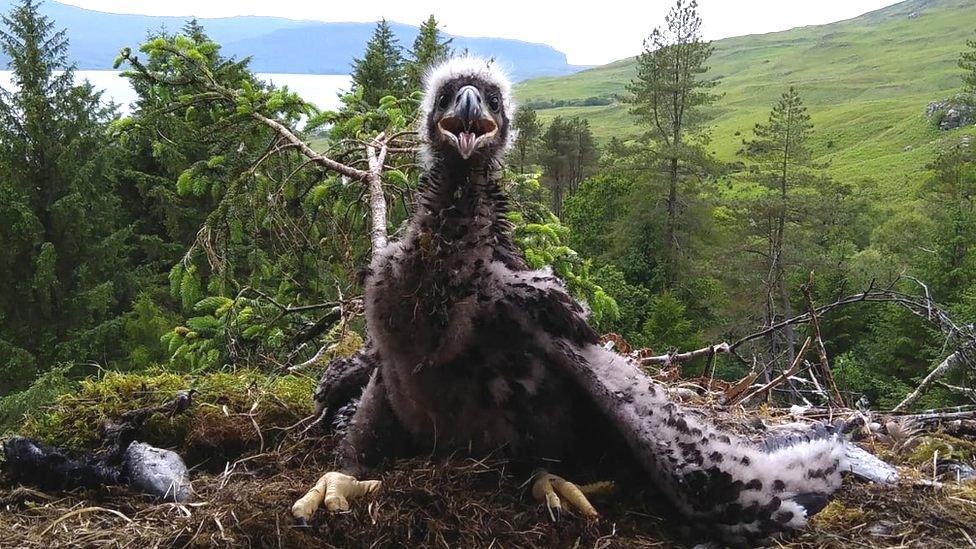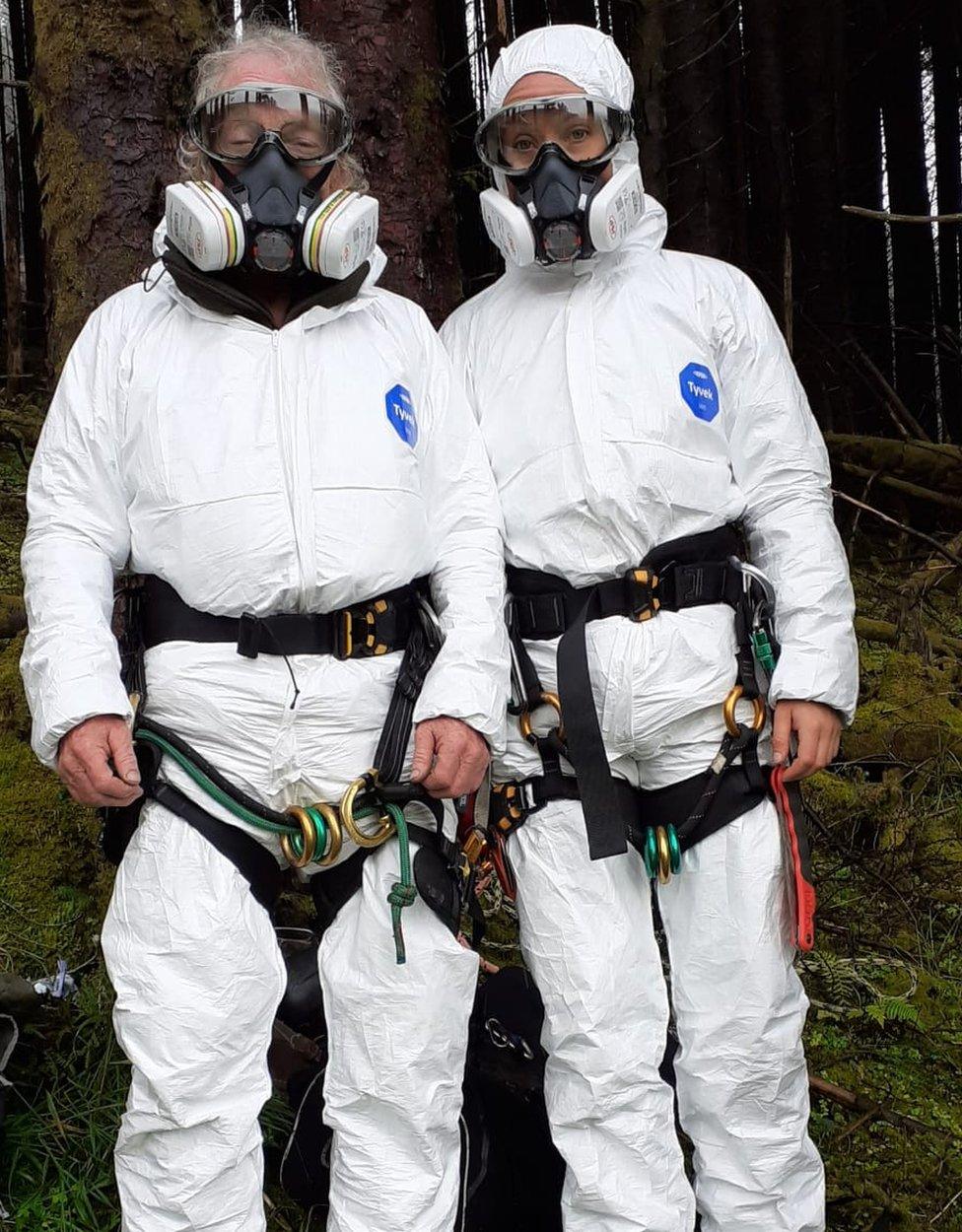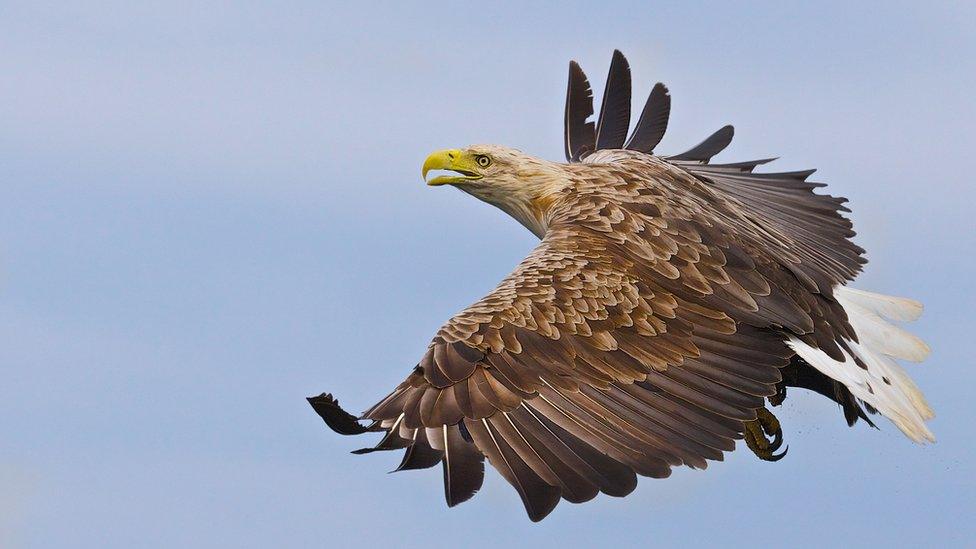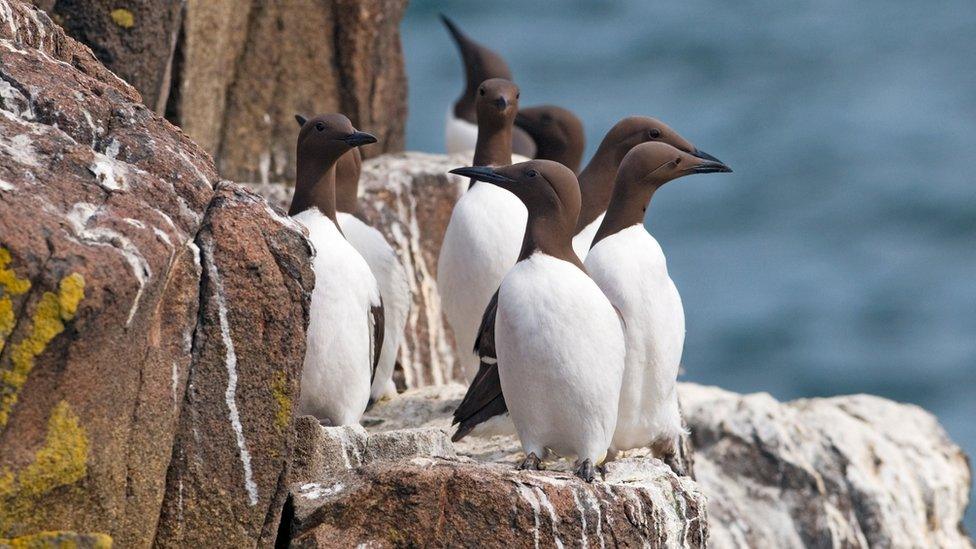Scottish west coast sea eagle chicks killed by bird flu
- Published

The Isle of Mull is an important breeding area of white-tailed sea eagles
Fears have been raised that Scotland's white-tailed sea eagle population could be devastated by bird flu after dead chicks tested positive for the virus.
RSPB Scotland said a chick on Mull - an important breeding area for the UK's largest bird of prey - was found to have had avian flu.
The charity said other chicks had been found dead with the virus on other parts of Scotland's west coast.
Bird flu has killed hundreds of other bird species across Scotland.
Sea bird colonies in Orkney, Shetland, the Firth of Forth, Argyll, the Western Isles, and Highlands have been badly affected.
RSPB Scotland and public body NatureScot have been investigating fatalities among 19 chicks that hatched on Mull this year.
Experts wearing protective clothing climbed 12m (39ft) high Sitka spruce trees to reach nests.
One chick found dead tested positive for bird flu, while two other fledglings were too decomposed to be sampled.

Experts wore protective clothing while investigating nest sites 12m up trees

RSPB's Dave Sexton said: "Late summer is usually an incredible time of year for Mull's white-tailed eagles as the youngsters fledge and learn to fend for themselves - a happy time for those of us involved in monitoring them during their first few months.
"These past few weeks though have instead been heartbreaking with so many chicks dying.
"Visiting nest after nest where, instead of hearing young birds calling, there's silence, and where adult birds are ignoring my presence rather than alarming, is awful."
Mr Sexton told BBC Radio's Good Morning Scotland programme his big concerns were if bird flu repeatedly affected breeding seasons and started killing adult birds.
He said Scotland's sea eagle population could be in "big trouble" as it only had about 150 breeding pairs.
Mull is home to the UK's oldest white-tailed sea eagles - Skye and Frisa, who are both about 30 years old and have been mates for 25 years.
Mr Sexton said it appeared the pair's 25th chick had escaped the virus.
He said: "My one uplifting moment in all this has been finding Skye and Frisa's 25th chick alive and well and flying confidently. I can only hope that she survives and that adult birds on Mull continue to be unaffected."


White-tailed eagles were once found widely across Scotland, but persecution led to their extinction in 1918.
A reintroduction programme began on the Isle of Rum in 1975 and in 1985 the first wild chick from that reintroduced population hatched on Mull.
In 2020, a pair of sea eagles successfully bred in Royal Deeside for the first time in 200 years.
The two chicks fledged after the pair nested on the Mar Estate in Aberdeenshire.
They were named Victoria and Albert.

White-tailed sea eagles are the UK's largest bird of prey
And last year sea eagles were spotted on Loch Lomond for the first time in more than 100 years.
Adult white-tailed sea eagles can have a wingspan of up to 2.4m (8ft) and feed on fish and dead animals, such as deer carcasses.
However, some crofters and farmers have reported lambs being taken by sea eagles. Earlier this year, Western Isles MP Angus MacNeil called for a cull to control numbers of the birds to protect livestock.
NatureScot runs the sea eagle management scheme, which gathers evidence of eagles' effects on livestock and provides equipment to scare off the birds.
The scheme's other mitigation measures include diversionary feeding - providing meat and fish in a location away from livestock.
Related topics
- Published2 August 2022

- Published26 January 2022
